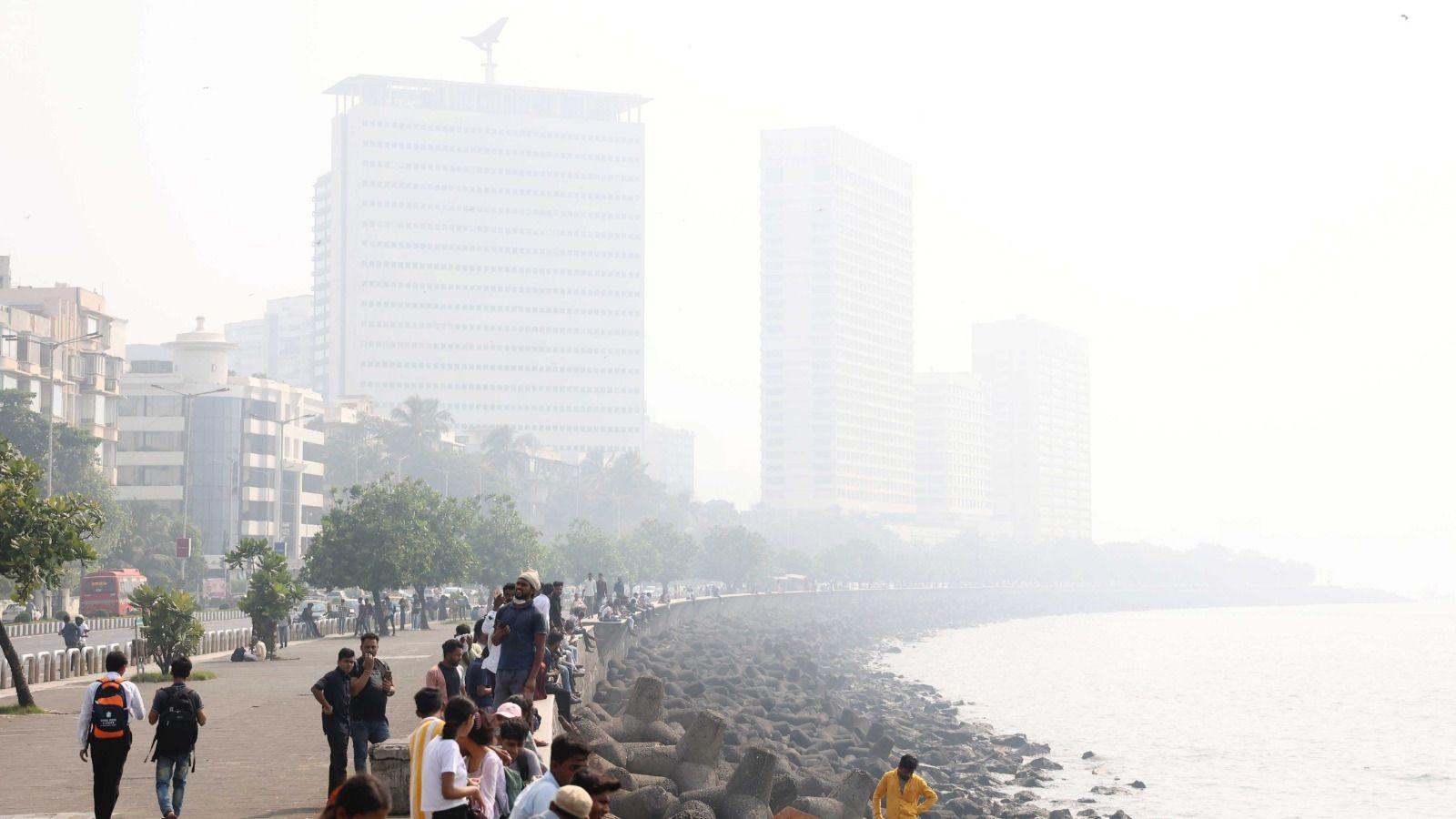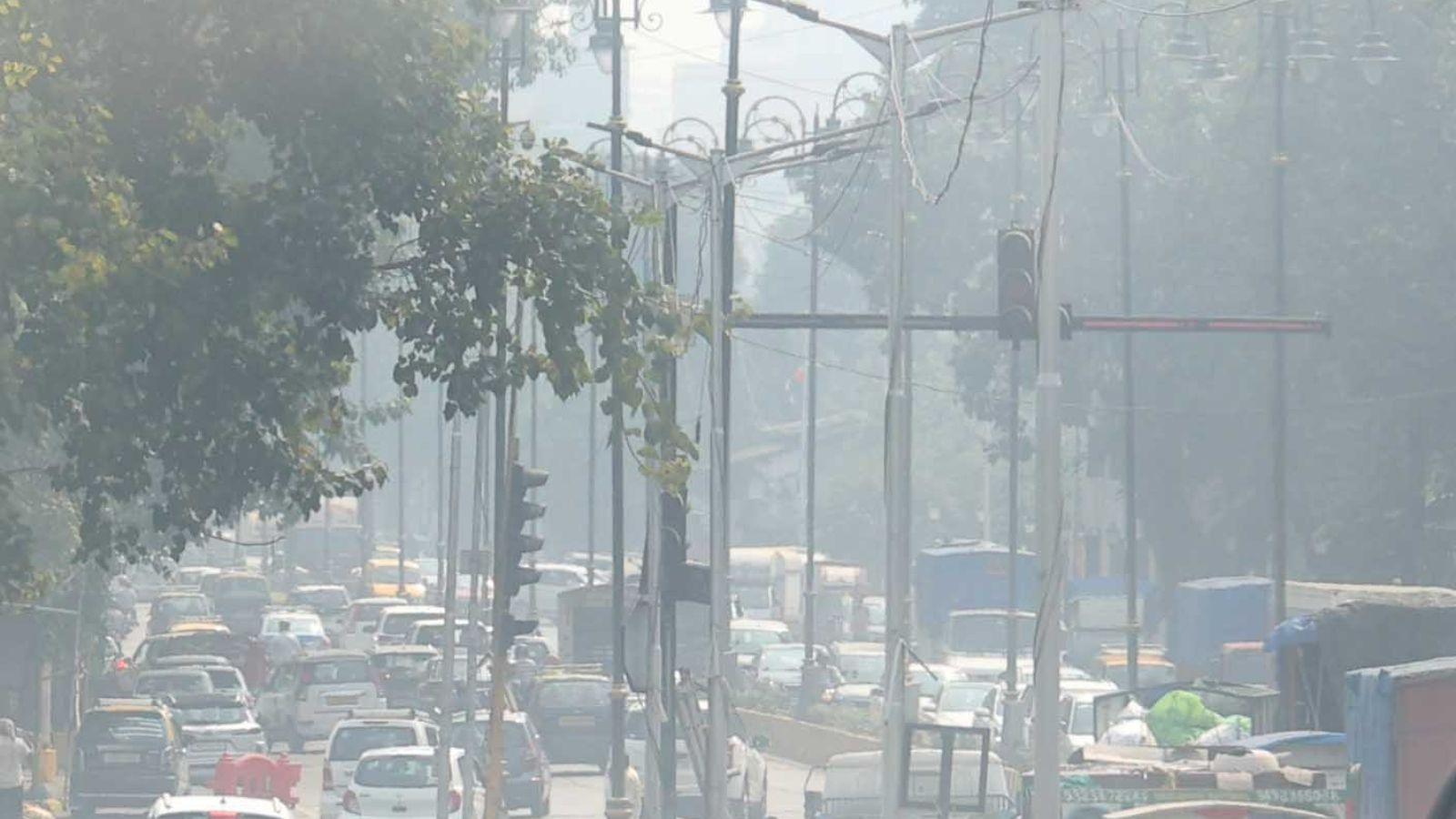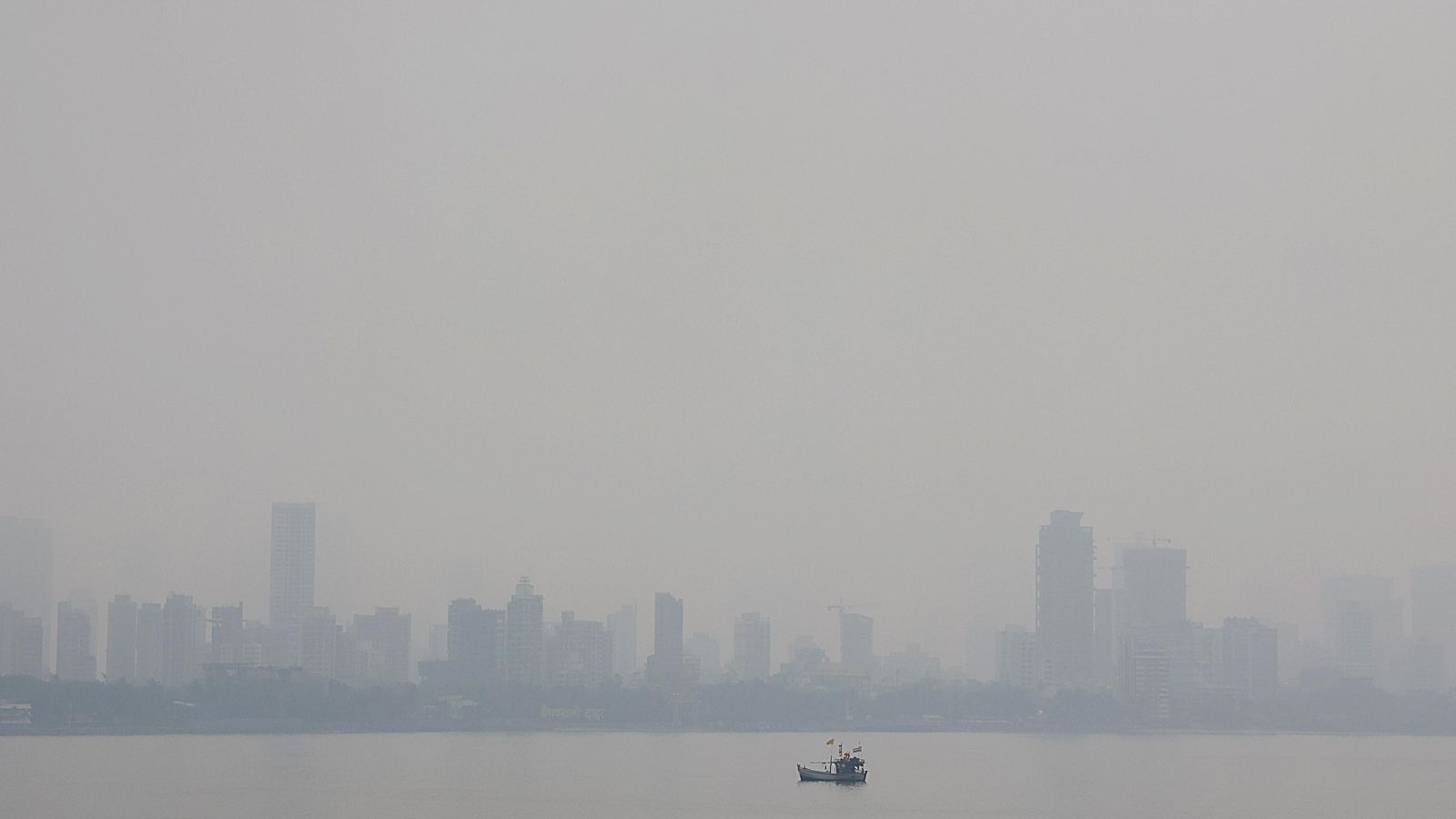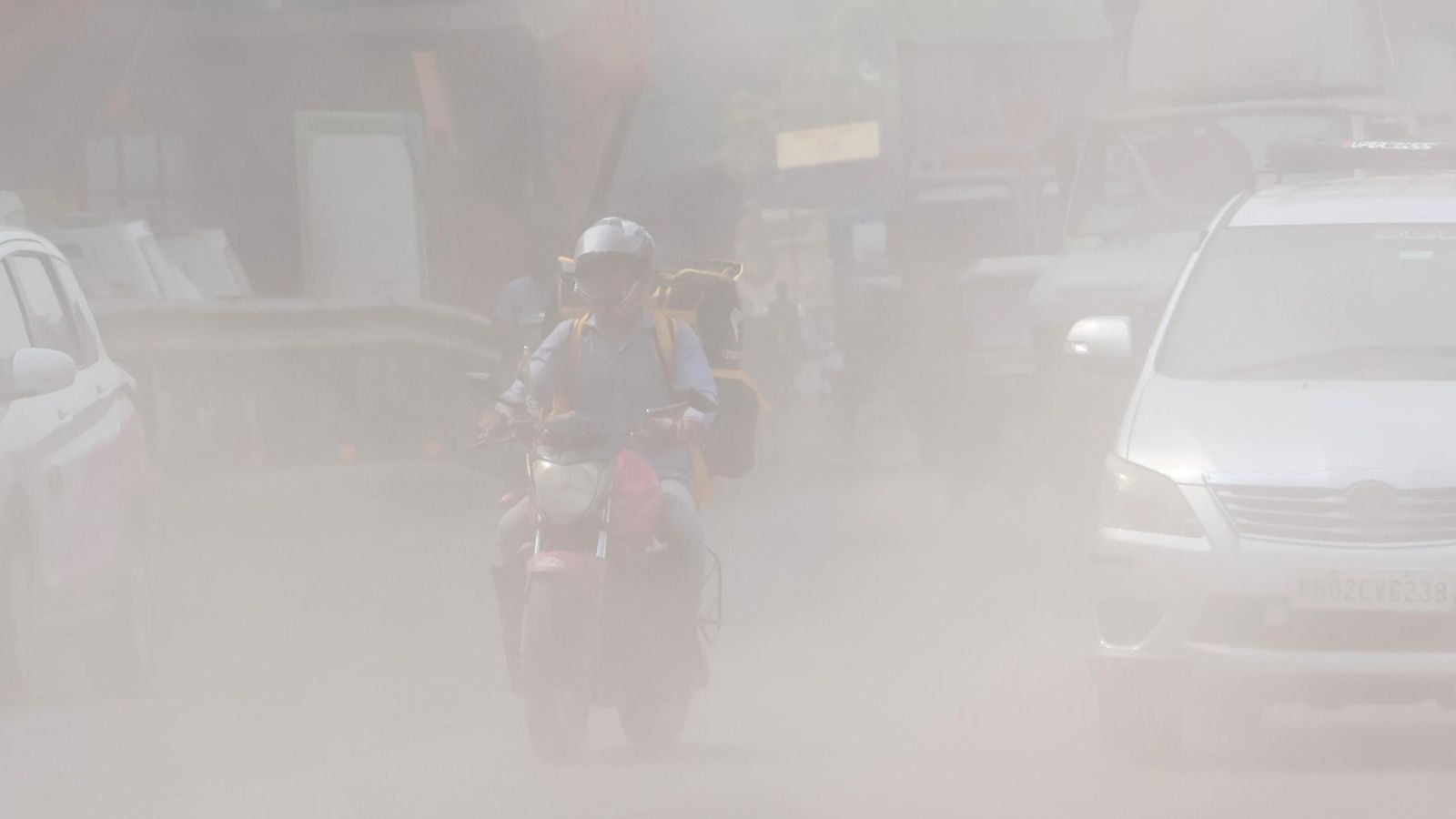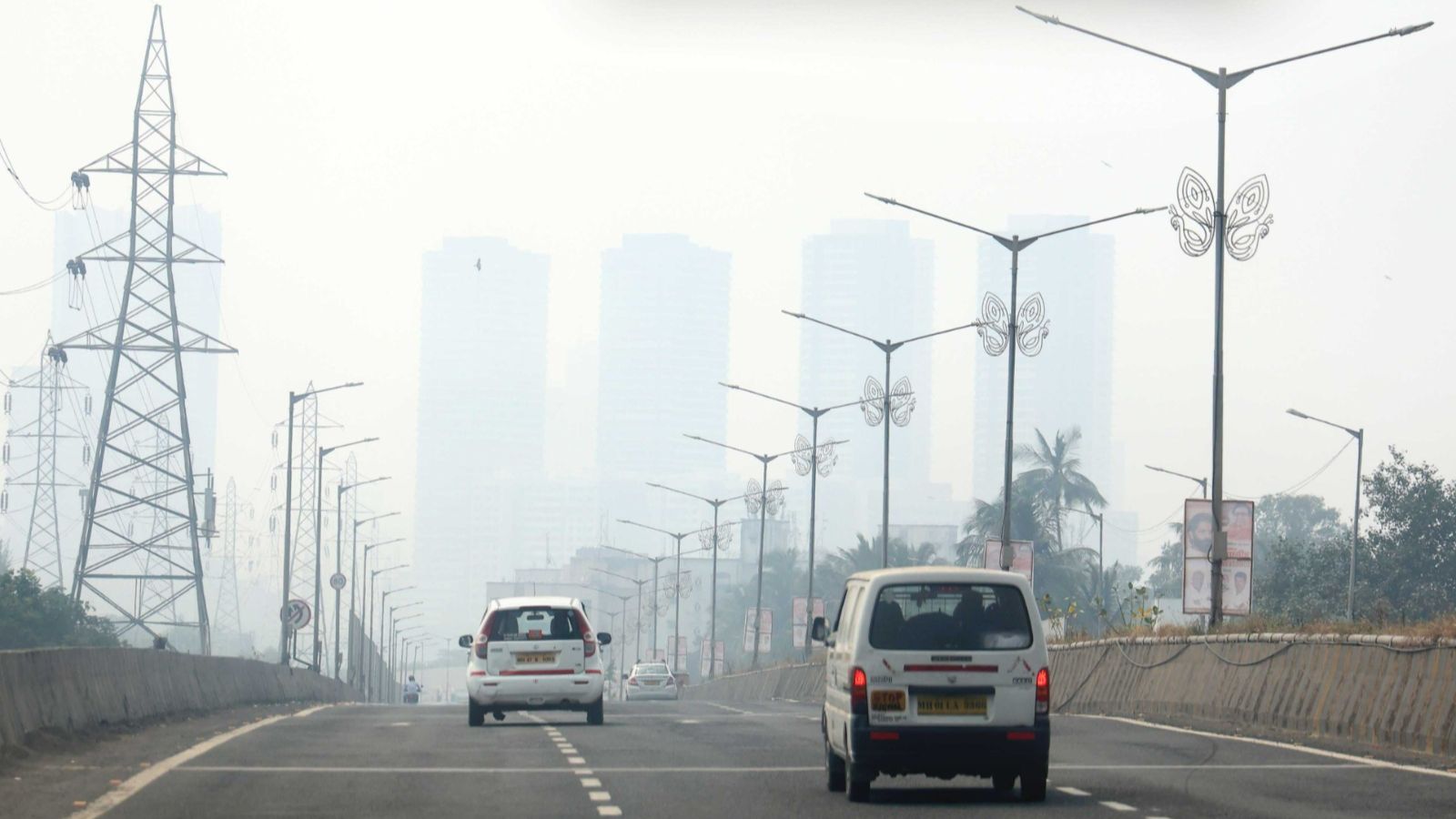Mumbai air turned ‘very poor’ or ‘severe’, but not one health advisory from BMC
It has been over almost eight months since the BMC announced the plan to issue public health advisories in February while presenting the budget.
 Among other reports, the bench also referred to The Indian Express report “Mumbai air turned ‘very poor’ or ‘severe’, but not one health advisory from BMC” published on Tuesday, under 'Death By Breath' series.
Among other reports, the bench also referred to The Indian Express report “Mumbai air turned ‘very poor’ or ‘severe’, but not one health advisory from BMC” published on Tuesday, under 'Death By Breath' series. LESS THAN a fortnight back on October 18, air pollution in Vile Parle — a suburb in western Mumbai where the airport is located — was ‘severe’ with the Air Quality Index (AQI) breaching the 400-mark and touching 411. But the residents of Vile Parle didn’t get any health advisory from the city’s civic body Brihanmumbai Municipal Corporation.
In fact, earlier on October 13, the AQI in Vile Parle touched 388 — meaning ‘very poor’ air quality. On October 16, Andheri — one of the busiest suburbs in Mumbai — recorded an AQI of 307, on to worsen a day later to 347, depicting ‘very poor air quality. Similarly, air quality in Mazgaon on October 17 was ‘very poor’ with an AQI of 307.
It has been over almost eight months since the BMC announced the plan to issue public health advisories in February while presenting the budget. It was also part of the Mumbai Air Pollution Mitigation Plan (MAPMP) which promised to warn residents and provide advisories during periods of worsening air quality, akin to warnings provided by the India Meteorological Department (IMD) ahead of heavy rainfall.
When contacted, Additional Municipal Commissioner, BMC, Sudhakar Shinde said the process of issuing a bulletin was still being chalked out. “The process of issuing health advisories is still being readied. We will be issuing bulletins based on the quality of air recorded on a particular day. The bulletins will health advisory from Mumbai civic body be issued only post consultation with health experts and doctors,” he told The Indian Express.
 A local train is seen running amid hazy conditions. (Express photo by Amit Chakravarty)
A local train is seen running amid hazy conditions. (Express photo by Amit Chakravarty)
According to AQI monitoring chart, an AQI between 0 and 50 is termed ‘good’, between 51 and 100 ‘satisfactory’, 101 and 200 ‘moderate’, 201 and 300 ‘poor’, 301 and 400 ‘very poor’, and an AQI beyond 400 AQI is ‘severe’.
Public health experts said a health advisory raises awareness levels among citizens by suggesting ways to safeguard themselves when pollution levels rise. If a Graded Response Action Plan is put in place — which the city does not yet have — it will become an imperative for the administration to make policy interventions.
Read Death By Breath Series – Mumbai holds its breath | Why construction dust is lethal | BMC’s rulebook gets a burial
Doctors insist that issuing advisories is necessary to shield residents, particularly those with respiratory ailments, from the hazardous pollutants lurking in the air.
“The advisories empower individuals, especially those with respiratory conditions, to minimise exposure to pollutants, promoting overall well-being and reducing adverse health effects from poor air quality,” said Bhagwan Kesbhat, CEO, Waatavaran Foundation.
Gufran Beig, senior scientist and project director in SAFAR (System of Air Quality and Weather Forecast and Research), said, “When AQI readings are between 200 and 300, it impacts vulnerable groups like senior citizens and children as well as people with co-morbidities, but people with good health condition will not be very much affected. However, if the AQI readings cross 300 or 400, it will start affecting a wider base of people and higher the readings climb, more and more people will be affected.”
“Therefore, the authorities need to customise their warnings as per the observation made at local level and universal warnings should be given out after the AQI crosses 300. Senior citizens need to be alerted after the readings cross 200,” he said.
 Over a six-year period from 2016 to 2021, a total of 14,396 individuals in Mumbai lost their lives due to COPD. (Express photo by Amit Chakravarty)
Over a six-year period from 2016 to 2021, a total of 14,396 individuals in Mumbai lost their lives due to COPD. (Express photo by Amit Chakravarty)
Experts said advisories should be disseminated through multiple channels, including social media, public announcements in pollution-prone areas, and push messages to ensure broader awareness, especially among residents in slum areas.
A former BMC Health Commissioner pointed out that the BMC already possessed mechanisms to disseminate daily AQI awareness and said, “The BMC issues health alerts during severe summer heat and that the COVID-19 experience has honed the system’s capabilities. The corporation just has to incorporate the AQI forecasts and real-time updates, along with health advisories already available in the SAFAR app, for the benefit of the citizens,” he said.
The need for advisories was also raised by Sumaira Abdulali from Awaaz Foundation. In a letter to the former chief minister—Uddhav Thackery and the then environment minister—Aditya Thackery, she had said, “The design for forecasting AQI and issuing health warnings will lead to increased public awareness and ultimately, a decrease in health risk. Health advisories for poor air pollution are an effective tool used across the world. It is critical that they are hyperlocal in nature, to best inform users about days and times when they should avoid outdoor activities such as walking, cycling, or other exercises, as well as prevent people with breathing problems and small children from playing outside in their specific neighbourhood.”
The Indian Express in ‘Death by Breath’ series revealed that inhaling PM 2.5 (particles with a diameter of 2.5 microns) levels exceeding 120 is akin to smoking 5-6 cigarettes daily, resulting in severe health consequences. Dr Lancelot Pinto, epidemiologist and pulmonologist from Hinduja Hospital explained how poor air quality is often compared to smoking in terms of health risks. Exposure to air pollution, particularly fine particulate matter (PM 2.5), can have similar detrimental effects on the respiratory and cardiovascular systems.
“Studies have also linked cardiovascular events to air pollution levels, and those with cardiac co-morbidities should also be cautious. Measures that help could be using masks (preferably high efficiency masks such as N-95 or K-95 masks), avoiding the outdoors when the AQI is poor, or limiting oneself to essential activities outdoors,” said Dr Pinto.
Doctors further advised that regular mask changes are vital in heavy pollution to prevent clogging. Asthmatic individuals, particularly children, should consistently use inhalers during outdoor activities. During respiratory tract infections, avoid poor air quality, as it could worsen symptoms. Assess the trade-off between exercise benefits and harm from poor air, especially for vulnerable individuals.
“To effectively implement these preventive measures, citizens must be educated about poor air quality. Often, people only become aware of air pollution when they experience eye irritation or persistent sneezing, already unknowingly exposed to pollutants,” said Dr Harshal Ramesh Salve, additional professor, Centre for Community Medicine at the AIIMS, Delhi.
Medical experts also pointed to the need for formulating a Graded Response Action Plan (GRAP) — a set of anti-air pollution measures similar to that being implemented in Delhi-NCR during the winter. The Stage 1 of GRAP is activated when the AQI is in the ‘poor’ category (201 to 300), Stage 2 is when it’s in the ‘very poor’ category (301-400), Stage 3 is when the AQI is the ‘severe’ category (401-450) and finally Stage 4 when it rises to the ‘Severe+’ category (more than 450).
 Climate change, the dip in La Nina — the cooling of the ocean surface — and changing wind patterns have all played a role in the change on the city’s pollution cycle. (Express photo by Amit Chakravarty)
Climate change, the dip in La Nina — the cooling of the ocean surface — and changing wind patterns have all played a role in the change on the city’s pollution cycle. (Express photo by Amit Chakravarty)
Highlighting the success of GRAP implementation, Dr Salve said it not only effectively mitigates air pollution through scientific measures but also issues timely health advisories to the public based on AQI. “The government knows what and when to do as per the AQI under GRAP. So, instead of waiting for air quality to worsen, Mumbai should proactively establish these mechanisms,” he said.
For instance, under GRAP I, it is advised to minimise outdoor activities, particularly during early morning and late evening. Keep windows and doors closed to reduce indoor exposure. Under GRAP II, it is suggested to avoid outdoor activities, especially for children, the elderly, and individuals with existing health conditions; also to use air purifiers and ensure good ventilation indoors.
SAFAR suggests four GRAP stages:
* Stage I: It enforces construction suspension for unregistered sites with a plot size of 500 square meters or more, bans coal and firewood use in food establishments, and takes action against polluting industries and power plants within 300 km of Delhi.
* Stage II: Stage II actions encompass raising parking fees to reduce private vehicle use, expanding CNG or electric bus and metro services through extra fleets and higher service frequency, and promoting public transport while minimizing personal vehicle usage.
* Stage III: During Stage III, the operation of BS-III petrol and BS-IV diesel four-wheelers is banned in Delhi, Gurugram, Faridabad, Ghaziabad, and Gautam Buddh Nagar. This stage also mandates a full suspension of construction and demolition activities, with exceptions for essential government projects, mining, and stone crushing.
* Stage IV: Stage IV encompasses a comprehensive ban on all construction and demolition activities. State governments have the authority to determine online classes for school students and the implementation of work-from-home arrangements for both government and private offices during such circumstances.

